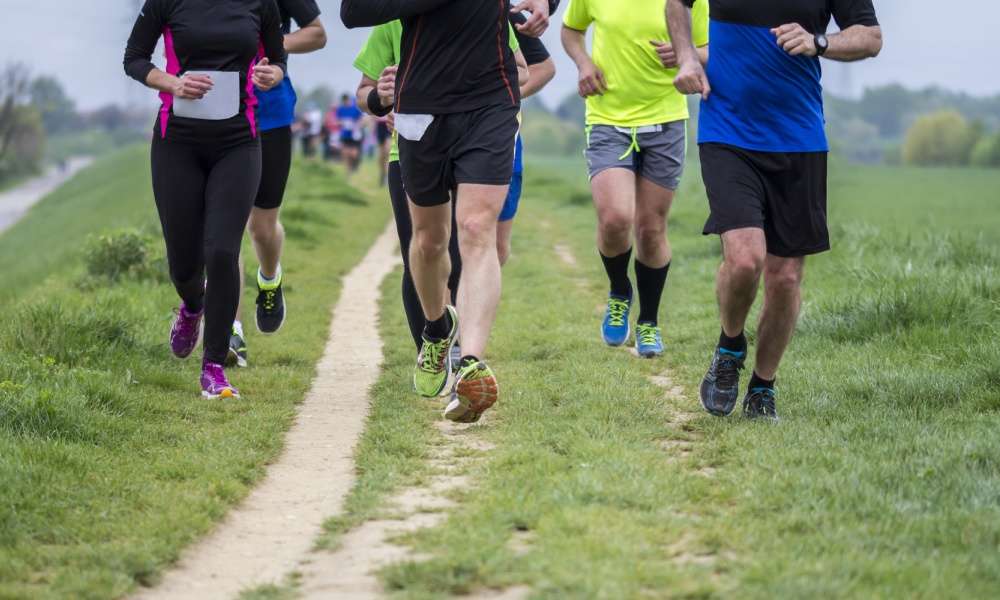Athletic Shoes for Flat Feet

People who want to stay or get in shape but have flat feel sometimes have a difficult time finding athletic shoes. After all, exercise often exacerbates muscle pains and aches, and not done appropriately and with proper footwear, can cause further injury and strain.
Fortunately, there are a variety of athletic companies that offer shoe lines that are good for flat feet and appropriate for different types of exercise.
Support shoes provide extra cushioning for the arch area and can be worn by people without foot problems. People who want to engage in serious exercise should opt for stability shoes, and in more severe cases, motion control shoes.
Different shoes for different types of exercise
Most of the research and technological advances with regards to shoes and various foot conditions have been to improve running shoes. As a result, it is relatively easy to find stability and motion-control running shoes.
Stability shoes offer gentler resistance and support against pronation (the tendency to turn the foot/ankle inward due to a fallen or non-existent arch in the foot) than motion control shoes. They can remain more flexible anywhere but the arch area.
Motion-control shoes are generally stiffer and have a straighter shape to counteract more severe symptoms and effects of flat feet.
Non-running shoes
Of course, not all athletic shoes are created for running. Designs and fit will differ, so it’s important to know what you may need to counteract your flat footedness. Ask the salesperson which versions of any particular shoe type have the most arch support that may be sturdier than the others.
If you cannot get custom molded, orthotic versions of the following types of athletic shoes, make sure you invest in a good pair of orthotic insoles that focus on providing extra stability where it is needed.
Ideally, your inserts should be custom orthotics to address the severity of your flat footedness. Make sure you bring your inserts when you try on your shoes, so that you can accurately gauge the fit and comfort of the shoes.
Barefoot running shoes
These shoes offer little to no support or cushion, intended only to protect the foot from sharp rocks or other objects and rough surfaces.
Barefoot running is excellent for strengthening foot muscles and alleviate some of the symptoms of flat feet, but only on soft surfaces like sand. If you want to do some serious running on harder surfaces, go with stability and motion-control running shoes.
Walking shoes
Walking shoes provide extra support for the arch, shock absorption, and a relatively smooth tread. They are constructed for the heel-toe movement of walking, so placement of support may differ slightly from other shoes.
Some walking shoes have a convex sole that makes the foot rock a bit while walking. Some people find this extra cushioning right-in-the-middle comfortable.
Hiking shoes
These shoes cushion the insole to absorb the impact from walking on rough or uneven ground. They have good tread for slippery ground, and most have higher uppers to provide stability to the ankle.
Cross trainers
Cross trainers are meant to tackle multiple sports; they are not recommended for people who want to focus on running. Cross training shoes may have some sort of tread, but it won’t be as effective as running shoe tread, and may not be appropriate to wear indoors for a class or to play a court sport.
Court shoes
Court shoes are made to provide stability in all directions, some of them with higher uppers to increase support to ankles. For example, basketball requires more jumping and landing than other court sports, so it is imperative to stabilize the ankle. In order to grip the smooth floor, court shoes tend to have solid treads.
Cleats
Cleats have spikes to ensure traction on surfaces like grass and Astroturf. Cleats for soccer, lacrosse, baseball, and football all have design variations (e.g. presence or absence of a toe cleat, level of stiffness in particular areas, and length of spikes), so make sure you obtain the appropriate type of cleat for your sport.
Cleats are generally narrower and are meant to be worn snug. You may wish to look for wider brands to account for orthotic inserts.
Other shoes
With solid, angular shoes meant to be immobile (like ski boots) and those that by virtue of their design put lots of pressure on the arch and midsole (like skates), it would be ideal to get them custom molded to fit your feet.
Cycling shoes are designed for a tight fit and to be securely attached to the bicycle pedal during repetitive pushing. They don’t really have room for an insert, so try to find a pair that has even more padding under the ball of your foot.